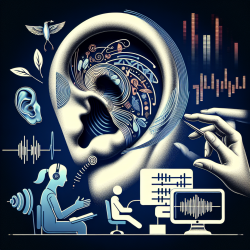Understanding Brain Death: A Clinical Overview
In the realm of critical care and neurology, the concept of brain death, also known as death by neurologic criteria (BD/DNC), has been a cornerstone in defining legal death. The research article "Brain Death: A Clinical Overview" provides an in-depth analysis of the clinical determination of brain death, exploring its philosophy, history, and the intricacies involved in its diagnosis. This blog aims to distill key insights from the article to enhance practitioners' clinical skills and encourage further research in this vital area.
Key Components of Brain Death Examination
The clinical determination of brain death involves a comprehensive examination of several factors:
- Assessment of Coma: Establishing a comatose state with no responsiveness to external stimuli.
- Cranial Nerve Testing: Evaluating the absence of brainstem reflexes, such as pupillary light reflex and corneal reflex.
- Motor Testing: Ensuring no cerebral response to painful stimuli, differentiating from spinal reflexes.
- Apnea Testing: Confirming the absence of spontaneous respiration when carbon dioxide levels rise.
These clinical components are crucial in establishing the diagnosis of BD/DNC, ensuring that the determination is both accurate and reliable.
Special Considerations in Pediatric Populations
Determining brain death in pediatric populations presents unique challenges due to anatomical and physiological differences. The guidelines for pediatric brain death, as updated by the American Academy of Pediatrics, emphasize the need for multiple examinations and extended observation periods to ensure accuracy. Practitioners must be acutely aware of these differences and apply a cautious approach when evaluating brain death in children.
Ancillary Testing and Its Role
While clinical criteria are the primary method for diagnosing brain death, ancillary tests such as EEG, transcranial Doppler, and radionuclide imaging can provide additional confirmation, especially when clinical tests are inconclusive or cannot be completed. These tests offer valuable insights into cerebral blood flow and electrical activity, aiding in the comprehensive assessment of brain death.
Encouraging Further Research
The determination of brain death is not without its controversies and challenges. Variability in protocols and understanding across different regions and institutions highlights the need for ongoing research and standardization. Practitioners are encouraged to engage with the latest research, participate in discussions, and contribute to the development of unified guidelines that ensure consistency and reliability in brain death determination.
For those interested in delving deeper into the intricacies of brain death and its clinical determination, I highly recommend reading the original research paper. It provides a comprehensive overview and detailed analysis that can significantly enhance your understanding and clinical practice.
To read the original research paper, please follow this link: Brain death: a clinical overview.










